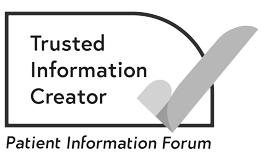Monitoring smouldering myeloma
What is smouldering myeloma?
Myeloma with no symptoms is called smouldering or asymptomatic myeloma.
If you have smouldering myeloma, you may not need treatment straight away. This is because there is no strong evidence that having treatment at this stage will help. Instead, doctors may suggest active monitoring.
What is active monitoring?
This means treatment is delayed until it is needed.
Your doctor will see you every few months to take blood samples and do some other tests. If tests show the myeloma is progressing or you develop symptoms, your doctor will talk to you about starting treatment.
Waiting to start treatment means you feel well for longer, as you will not have the side effects from treatment. If you are worried about not having treatment, you might find these tips helpful:
- Make sure you understand why active monitoring is recommended. If you have any concerns, talk to your doctor.
- Try to think of the time without treatment as an opportunity to make the most of your quality of life. Use your time to do things you enjoy, and to get as fit and healthy as you can.
- Try to focus on the present, rather than what might happen in the future.
- Express your feelings. You can do this by talking to family and friends, joining a support group or online forum, or by keeping a journal.
Although active monitoring can be difficult to adjust to at first, many people find it gets easier as time goes on. We have more information about the emotional effects of cancer.
Some people may be offered treatment for smouldering myeloma, but only as part of a clinical trial.
About our information
-
References
-
Reviewers
The language we use
We want everyone affected by cancer to feel our information is written for them.
We want our information to be as clear as possible. To do this, we try to:
- use plain English
- explain medical words
- use short sentences
- use illustrations to explain text
- structure the information clearly
- make sure important points are clear.
We use gender-inclusive language and talk to our readers as ‘you’ so that everyone feels included. Where clinically necessary we use the terms ‘men’ and ‘women’ or ‘male’ and ‘female’. For example, we do so when talking about parts of the body or mentioning statistics or research about who is affected.
You can read more about how we produce our information here.
Date reviewed
This content is currently being reviewed. New information will be coming soon.

Our cancer information meets the PIF TICK quality mark.
This means it is easy to use, up-to-date and based on the latest evidence. Learn more about how we produce our information.



